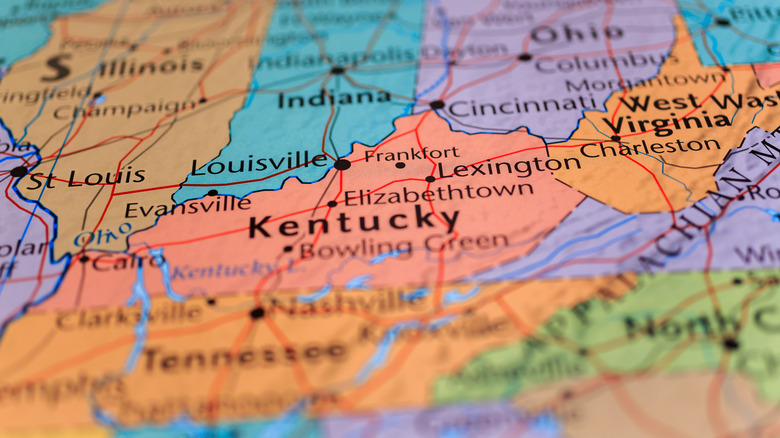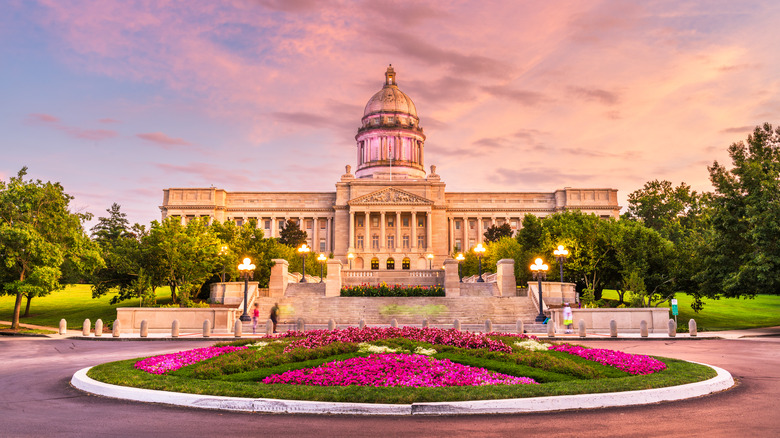The Real Reason Kentucky Separated From Virginia
A few states within the United States of America only obtained their statehood after originating as parts of other states. Maine got its start as part of Massachusetts, and West Virginia and Kentucky were both part of Virginia. According to Kentucky Tourism, before white settlers arrived in the lands that would become Virginia, West Virginia, and Kentucky, the land was known as the "Great Meadow" and its control was disputed between Native American Shawnee tribes from north of the Ohio River and Cherokee and Chickasaw tribes from south of the Cumberland River. In the 17th century, per Britannica, French and Spanish explorers first entered the region. In the early 18th century traders from the eastern North American British colonies arrived via the Ohio River and the Cumberland Gap.
In 1750, an expedition led by Virginian physician Dr. Thomas Walker established the region's southern boundary. Known as the "Walker Line," it was an extension of the boundary between Virginia and North Carolina. Further exploration from colonial forces declined for a decade due to the French and Indian War, although by the end of the war the Ohio River was secured, making possible a large influx of European colonists. Daniel Boone led a hunting party into the central region in 1769 and established Fort Boonesborough in 1775. In 1776, Kentucky was made a separate county within Virginia.
Kentucky remained part of Virginia for a surprisingly long time
The last major battle of the Revolutionary War was fought in what would become Kentucky. Known as the Battle of Blue Licks, it resulted in the sound defeat of Revolutionary forces by British and Native American armies (via Kentucky Historical Society).
As reported by Britannica, after the Revolutionary War, more settlers came to Kentucky via rivers and the Wilderness Road that ran through the Cumberland Gap and was first established by Daniel Boone. Per Puerto Rico 51st, calls for the separation of Kentucky from Virginia began in earnest in 1784. Both Spain and England had tried to exploit Kentucky's desire for independence. England offered, seemingly half-heartedly, to recognize it separately from Virginia in exchange for an alliance with England during the American Revolution. Spain wanted recognition of its claim to the Mississippi River region. Kentucky used these associations with foreign powers to speak to its worthiness of being accepted by Congress, as well as the state of Virginia, as its own state.
Nevertheless, between 1785 and 1791 nine different conventions sought and failed to give Kentucky statehood. Eventually, Virginia gave its approval, the 10th constitutional convention succeeded, and on June 1, 1792, Kentucky became the 15th of the United States of America and the first state west of the Appalachian Mountains to be admitted to the union. Military veteran Isaac Shelby of Virginia was appointed governor three days later at an organizational meeting that took place at a tavern. Frankfort was selected as the capital city; the capitol building is shown above.

